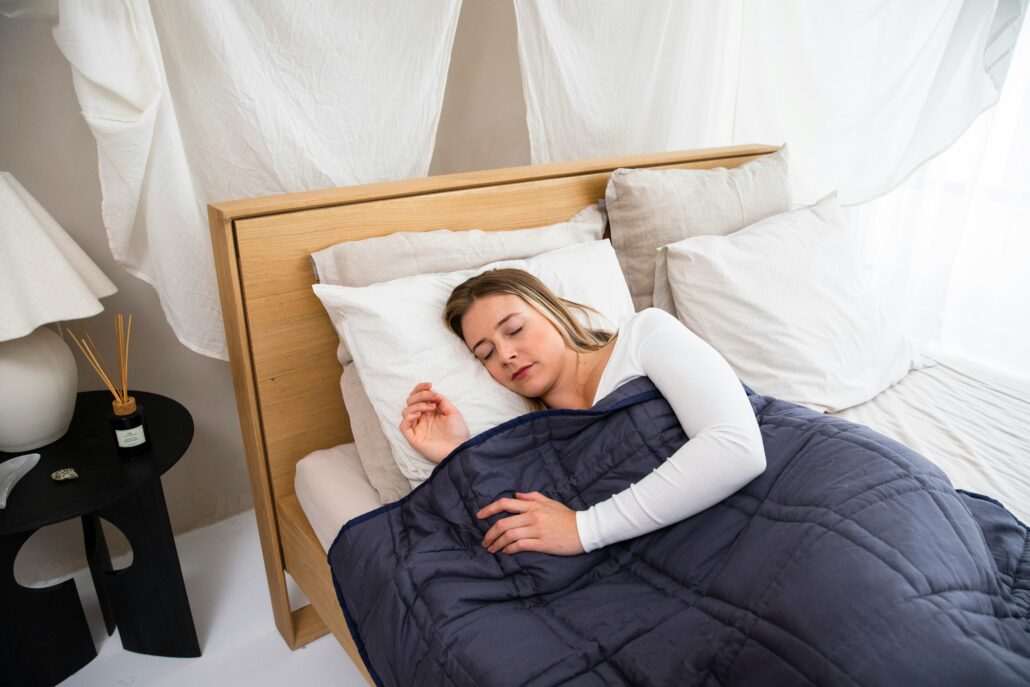What’s Your Noise Color? Exploring the Science of Sonic Shades
Using Noise Colors to Enhance Your Sleep and Focus
Did you know that a staggering 62% of U.S. adults consider themselves poor sleepers? In contrast, just 35% claim to be excellent sleepers, with only 3% feeling like average sleepers. These insights come from the Better Sleep Council’s State of America’s Sleep study, which reveals how various factors—like education, mental and physical health, and sleep aids—affect our sleep quality.
Today, we’re diving into one of these factors: noise colors! Discover how utilizing the right sounds can help you transform your sleep from restless to restful. Let’s unlock the secrets to becoming an excellent sleeper!
Sound vs. Noise (Colors)
What is the difference between sound and noise? Sound is the vibrations that travel through the air that we hear. Noise is unwanted sound—except for well-researched, properly used noise colors.
Surprisingly, poor sleepers are trying to use color noise to help them sleep. 38% of poor sleepers regularly sleep with a fan and 11% sleep with a sound machine, white noise, or a phone app. It’s important to use the right noise color for your sleep needs.
The Science of Noise Colors
Sound is measured in frequency, similar to light colors on the spectrum. Frequency, or pitch, is measured in hertz (HZ) and the healthy human ear hears sounds between 20 HZ and 20,000 Hz. White noise is distributed equally throughout the frequencies we hear. It can be startling for some people because of its high pitch. Pink noise is on a lower frequency and sounds more natural than white noise. Brown noise is also on an even lower frequency, heard as rumbling or heavy bass. Consider the following descriptions of different noise colors:
- White Noise: Similar to static on a TV or the hum of a fan.
- Pink Noise: Pink noise sounds like light rainfall or bustling leaves in the wind.
- Brown Noise: Also known as red noise, brown is deeper and grainier than white or pink noise. It sounds like steady rain or water from a pressurized hose.
These three noise colors can mask sounds by creating calm, consistent, and gentle sounds in the background. When our ears tune to the pleasing noises, our brains block out unwanted sounds and disruptive noises.
For example, your brain focuses on a color noise instead of hearing traffic outside a window. The traffic is still there, but your brain doesn’t signal your auditory system to listen to it because a preferred noise blocks it.
Targeted Masking
Tinnitus, or constant ringing in the ears, can make getting healthy, rejuvenating sleep challenging. Listening to continuous brown noise has been reported to provide a soothing effect that masks environmental noise and makes it easier and quicker to fall asleep, also known as sleep latency.
The American Tinnitus Association has a Sound Therapy library of noises that can help people with tinnitus and others fall asleep faster and block out loud noises.
Sleep Deeper
Deep sleep happens during stages three and four of our nightly sleep cycle. Without deep sleep, we can feel tired and lethargic no matter how long we sleep. Deep sleep is essential to our overall health and well-being in a number of ways:
- Physically repairs our bodies
- Strengthens our immune systems strengthening
- Consolidates memories
- Cleanses metabolic wastes from our brains
- Regulates hormones
Noise Colors and ADHD
One remarkable discovery about noise colors is that they can ease symptoms of Attention Deficit Hyperactivity Disorder (ADHD) due to the imbalance of how dopamine—a neurotransmitter and hormone—is released in the brain. Dopamine influences the brain’s reward system by helping to control actions such as:
- Motivation
- Pleasure
- Movement
- Memory
- Attention
- Mood
People with ADHD often feel like their minds are always “on.” They jump from one thought or task to the next without finding the desired outcome. While ADHD medication slows dopamine release, studies show that white noise can as well.
Published by the peer-reviewed journal Complementary Therapies in Medicine in 2018, researchers found that white noise helps control impulsivity and focus, common symptoms that people with ADHD experience. The study determined that white noise can potentially improve ADHD symptoms in children through stochastic resonance (SR)—a phenomenon that “moderates noise facilitates cognitive performance.” SR happens when a weak signal is boosted by adding white noise, balancing the signal-to-noise ratio. When this occurs, the auditory system in a person with ADHD can better distinguish the transmitted signal.
Studies on the effects of white noise on children and young adults with ADHD are promising as well.
One study compared the use of white noise on an equal number of children with and without ADHD. The researchers determined that white noise could be an effective nonpharmacological treatment for ADHD in preschoolers with low attention spans.
A 2022 study found that white noise at a low, consistent volume can result in better attention, accuracy, speed of performance, enhanced creativity, and less stress. The same study also found that louder noise levels improved working memory but increased stress.
One of the few studies on the use of brown noise for people with ADHD found that their lower dopamine levels require noise for optimal performance. Brown noise can act as a stimulant to help people with ADHD concentrate on tasks.
Recent social media trends have featured influencers and bloggers giving first-hand accounts of using brown noise to improve focus. Scientists hope that attention to brown noise will lead to more research on the topic.
Personalizing Your Experience with Noise Colors
Regardless of why you want to use noise colors, there are some ways to improve your experience.
Be Consistent
Consistency signals to our minds and bodies that it’s time to sleep or go back to sleep. Think of noise colors as the opposite of an alarm clock. Instead of jolting you awake, white, pink, or brown noise soothes you to sleep.
Embrace Tech
Technology allows you to travel with your chosen noise color to stay consistent and get good sleep. Numerous apps and streaming services offer a variety of noise colors.
Incorporate Noise Into a Bedtime Routine
One of the best ways to ensure that you get quality sleep night after night is to create a bedtime routine. An effective routine should include activities that help you relax. Any noise color can accomplish this, but it can take a bit of trial and error to find your best fit.
Control Timing
No matter which noise color you choose, physicians advise to limit the time to the first 10 to 15 minutes after you go to bed. Your mind needs time to recover before drifting off to sleep. Use a timer on a sound machine or app.
Turn It Down
You certainly don’t want to trade one problem for another when trying to change your sleeping habits. Prevent hearing loss by keeping your chosen noise color as low as possible. The volume level is especially important if you prefer to use earbuds. Noise that is too loud can harm the inner ear immediately or over time. When using a sound machine, position it across the bedroom so it’s not too loud.
Soothing Noise Quiets the Mind
Understanding noise colors and their profound effects can significantly elevate our sleep quality and overall well-being. With many U.S. adults facing sleep challenges, exploring sound as a beneficial tool can lead to transformative solutions.
White, pink, and brown noises empower us to mask unwanted disturbances, promote deeper sleep, soothe tinnitus, and even assist those with ADHD in enhancing focus and controlling impulsivity. As we uncover the intricate connection between sound and health, integrating the right noise colors into our nightly rituals becomes a powerful step towards revitalizing sleep. By embracing these scientific insights, we can create an environment that fosters restorative rest and invigorates our daily lives.



